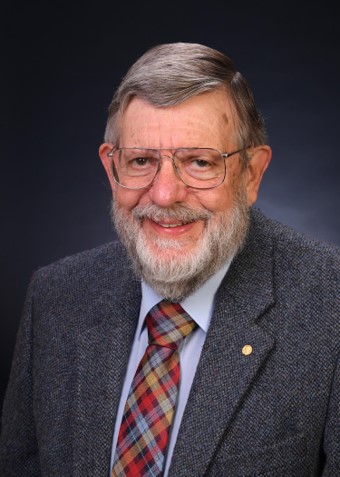Dr. William D. Phillips is a Nobel Prize-winning physicist and a Distinguished Visiting Professor of Physics at Morgan State University. Dr. Phillips is also a Research Fellow at the National Institute of Standards and Technology (NIST) and a Professor of Physics at the University of Maryland, College Park’s Joint Quantum Institute.
Throughout his career, Dr. Phillips has developed techniques for high-precision measurements of electrical, optical and quantum phenomena which have aided the study of the fundamental physical constants of nature. NIST’s Laser Cooling and Trapping Group, founded by Dr. Phillips, has developed some of the most important techniques and technologies for using lasers to trap and cool atoms to as low as a millionth of a degree above absolute zero, making it possible to study a variety of quantum behaviors that were previously out of reach. These methods, now used by thousands of scientists worldwide, have a wide range of important applications including but not limited to atomic clocks, GPS navigation, quantum simulations and quantum computing.
At Morgan State University, Dr. Phillips has established the “Morgan-Oxford” Mentoring Program for freshmen physics majors together with Dr. Charles Clark of the University of Maryland, College Park’s Joint Quantum Institute and Dr. Angela Hight-Walker of NIST. Drs. Phillips, Clark and Hight-Walker meet weekly with mentees to discuss a broad array of topics in physics and its applications, both historical and modern. These weekly sessions strengthen students’ understanding and appreciation of physics and their persistence in their studies. Dr. Phillips has also hosted interactive campus-wide seminars on contemporary topics in science.
Dr. Phillips shared the Nobel Prize in Physics in 1997 with former U.S. Energy Secretary Dr. Steven Chu and Dr. Claude Cohen-Tannoudji from France. He is a member of both the U.S. National Academy of Sciences and the Vatican’s Pontifical Academy of Sciences.
Contact Information
Chairperson:
Willie Rockward
willie.rockward@morgan.edu
Administrative Assistant:
Teresa Black
teresa.black@morgan.edu
Shopkeeper:
Johnny Norris
johnny.norris@morgan.edu
1700 East Cold Spring Lane
Calloway Hall - G22
Baltimore, Maryland 21251
P: (443) 885-3226
F: (443) 885-8288
E: Physics_Department@morgan.edu
Contact Information
Chairperson:
Willie Rockward
willie.rockward@morgan.edu
Administrative Assistant:
Teresa Black
teresa.black@morgan.edu
Shopkeeper:
Johnny Norris
johnny.norris@morgan.edu
1700 East Cold Spring Lane
Calloway Hall - G22
Baltimore, Maryland 21251
P: (443) 885-3226
F: (443) 885-8288
E: Physics_Department@morgan.edu


